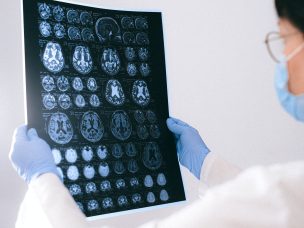Contributions
Meat-Free Diet Could Cut Your Risk for COVID
Key Takeaways Vegetarian diets appear to help people avoid COVID infection People eating plant-based diets were 39% less likely to contract COVID About 52% of meat-eaters became infected with COVID, compared with 40% of vegetarians/vegans Vegetarian diets have been tied to a variety of health benefits – lower blood pressure, better blood sugar control and...
Morphological Classification of Skin Eruptions in Chronic Spontaneous Urticaria
A hierarchical mathematical modeling approach accurately described the pathophysiological states of chronic spontaneous urticaria based on the geometrical features of skin eruptions, which may improve diagnostic accuracy and disease management. Chronic spontaneous urticaria (CSU) is a cutaneous disorder associated with wheals of different morphological characteristics. The pathophysiological states of the disease involve the coagulation system,...
Epidemiological and Clinical Characteristics of Patients With Chronic Spontaneous Urticaria
A cross-sectional study of chronic spontaneous urticaria found that adult patients have a greater incidence of autoantibodies and metabolic syndromes, whereas atopy and autoimmune disorders have a greater incidence in pediatric patients. Chronic spontaneous urticaria (CSU) is characterized by urticaria lasting for 6 weeks or longer, usually occurring in adults aged 20–40. CSU is associated...
Epidemiological and Clinical Characteristics of Patients With Chronic Spontaneous Urticaria
A cross-sectional study of chronic spontaneous urticaria found that adult patients have a greater incidence of autoantibodies and metabolic syndromes, whereas atopy and autoimmune disorders have a greater incidence in pediatric patients. Chronic spontaneous urticaria (CSU) is characterized by urticaria lasting for 6 weeks or longer, usually occurring in adults aged 20–40. CSU is associated...
Long-Term Assessment of Omalizumab Effectiveness in Chronic Spontaneous Urticaria
Compared to the systemic immune-inflammation index, the systemic inflammatory response index has a better predictive value for drug survival in chronic spontaneous urticaria patients treated with omalizumab, according to the results of a retrospective study. Chronic spontaneous urticaria (CSU) is described as a mast-cell-associated disease. Patients suffering from CSU suffer from recurrent wheals and hives...
Alterations in Signaling and Interactions of Astrocytes in Multiple Sclerosis
A literature review evaluated recent findings regarding changes in signaling modalities and interactions of astrocytes in multiple sclerosis. Multiple sclerosis (MS) is a chronic demyelinating disease of the central nervous system (CNS). Astrocytes, the most abundant CNS glial cells, are critical for CNS health and function and have, therefore, gained attention for investigation in MS. ...
Cognitive Effects of Neurofilament Levels and Brain Atrophy in Multiple Sclerosis
Brain MRI volumetric measurements are a better predictor of cognitive performance than neurofilament light chain levels in multiple sclerosis, according to a recent 10-year follow-up study. Cognitive impairment is an important factor in disability due to multiple sclerosis (MS). The neurofilament light chain (NfL) is a promising biomarker for neuroaxonal damage. Research has correlated increased...
Lower Urinary Tract Symptoms and Dehydration in Progressive Multiple Sclerosis
Lower urinary tract symptoms are associated with inadequate hydration in progressive multiple sclerosis, according to a recent prospective study. Lower urinary tract symptoms (LUTS) are very common in people with multiple sclerosis (MS). The prevalence of self-reported LUTS is approximately 68% in MS patients. LUTS can be disabling and affect the quality of life in...
Motor Sleep Inertia and Motor Wake Inertia Dissipation in Early Relapsing–Remitting Multiple Sclerosis
Patients with early relapsing–remitting multiple sclerosis display a more marked motor wake inertia than healthy controls. Sleep inertia is the transitional state between sleep and wake, characterized by impaired performance, reduced vigilance, and a desire to return to sleep, while motor wake inertia is the motor activity pattern during the transition between wakefulness and sleep....








